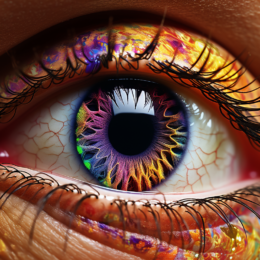Understanding Sundowning in the Elderly: Causes, Symptoms, and Prevention

If you’ve ever been puzzled by drastic shifts in the mood and behavior of an elderly loved one as the sun sets, then you’ve stumbled upon the right article. Let’s talk about a phenomenon called sundowning that’s as perplexing as it is common among our older friends and family members. In the mix, we’ll meet Martha, an energetic 75-year-old woman who adds a real-life angle to what sundowning in the elderly is all about.
What Is Sundowning In the Elderly?
Sundowning refers to a range of behavioral changes that occur in the evening among some elderly individuals, particularly those with Alzheimer’s disease and other forms of dementia. Imagine a normally calm and affable grandparent suddenly becoming restless, anxious, or aggressive as the day winds down. For Martha, a fiercely independent woman who enjoys her book club and gardening, sundowning began with a noticeable increase in irritability around 6 PM every day.
Statistics:
- According to the Alzheimer’s Association, up to 20% of the 6 million Americans with Alzheimer’s experience sundowning.
- Around 60% of all dementia caregivers report that their care recipients show symptoms of sundowning.
- The phenomenon generally starts to manifest in the middle stages of dementia.
What Causes Sundowning in the Elderly?
The exact causes are still a bit murky. However, experts have a few theories:
- Disturbed Circadian Rhythm: As we age, the internal body clock that governs sleep-wake cycles may weaken.
- Environmental Triggers: The transition from daylight to darkness can be disorienting for some elderly people.
- End-of-Day Fatigue: The build-up of sensory experiences throughout the day might lead to overwhelming exhaustion.
For Martha, sundowning seemed to kick in when her lifelong routine of afternoon tea and reading was disrupted after moving to a care facility. The change in her schedule and environment might have played a significant role.

What Are the Symptoms of Sundowning in the Elderly?
Common symptoms include:
- Restlessness
- Anxiety or panic
- Irritability
- Aggression
- Pacing or wandering
In Martha’s case, her family noticed that she began accusing staff of stealing personal items and pacing around her room in the late afternoon.
Quick Poll
How to Treat Sundowning?
Treatment for sundowning typically involves a multi-pronged approach:
- Medication: Antipsychotic medications may be prescribed, but they come with their own set of risks.
- Environment: Creating a calm and soothing environment can help. Soft lighting and comforting music have proven effective.
- Activity Planning: A well-planned day that includes physical and mental exercises can keep restlessness at bay.
How to Prevent Sundowning?
Prevention, they say, is better than cure:
Maintain a Routine
Consistency is the cornerstone here. Meals, bathing, activities—try to keep them at the same time each day. A predictable routine can help orient the mind and ease anxiety. In Martha’s case, re-establishing her routine of afternoon tea and reading provided a sense of continuity that helped diminish her symptoms.
Natural Light Exposure
Exposure to natural light during the day can help regulate the body’s internal clock and improve sleep quality. Take a stroll outdoors, open the curtains, or even try light therapy under medical guidance. Martha’s family arranged for her to spend more time in the facility’s garden, and guess what? She started showing improvement in her mood and sleep.
Limit Stimulants
Steer clear of the naughty list—caffeine and sugar—in the late afternoon and evening. These stimulants can create a rollercoaster of energy levels and mess with sleep patterns. If you don’t want Grandma turning into the Energizer Bunny at dusk, maybe switch that post-dinner espresso for a calming herbal tea.
Physical and Cognitive Engagement
Engage your loved ones in activities that tire them out physically and mentally—just enough to make them comfortable but not to the point of exhaustion. A session of light yoga, a round of crossword puzzles, or some quality family time can make a world of difference. For Martha, taking part in the facility’s knitting club (a new hobby she picked up) not only gave her something to look forward to but also helped her feel accomplished, keeping the agitation at bay.
Healthy Diet
Nutrition plays a vital role, not just for your gym results but also for cognitive function. Make sure your elderly loved ones are getting a balanced diet rich in nutrients. Consult a healthcare provider for specific dietary recommendations. After a dietary adjustment that included more omega-3 fatty acids, Martha’s sundowning symptoms showed signs of easing. Who knew salmon could be a superhero?
By focusing on these preventive measures, Martha and her family found a harmonious balance that significantly reduced her evening ordeals. Who knows, the same could very well work for your loved one, too.
Conclusion
Let’s face it: aging can bring challenges not just for the elderly but also for those who love and care for them. Sundowning in the elderly is one of those challenges that we may confront, and knowledge is power. So, let’s arm ourselves with the tools to offer support and care.
PLEASE SHARE YOUR EXPERIENCE AND THE COMMENTS BELOW, SO WE CAN HELP EACH OTHER WITH THE KNOWLEDGE YOU HAVE GAINED.
References
- Alzheimer’s Association. (2022). “Sundowning.”
- American Geriatrics Society. (2022). “Caregiver Tips for Sundowning.”
- National Institute on Aging. (2022). “Coping with Agitation and Aggression in Alzheimer’s Disease.”
- Sleep Foundation. (2022). “The Connection Between Sleep and Sundowning.”
- Mayo Clinic. (2022). “Behavioral and Psychological Symptoms of Dementia: Sundowning.”




